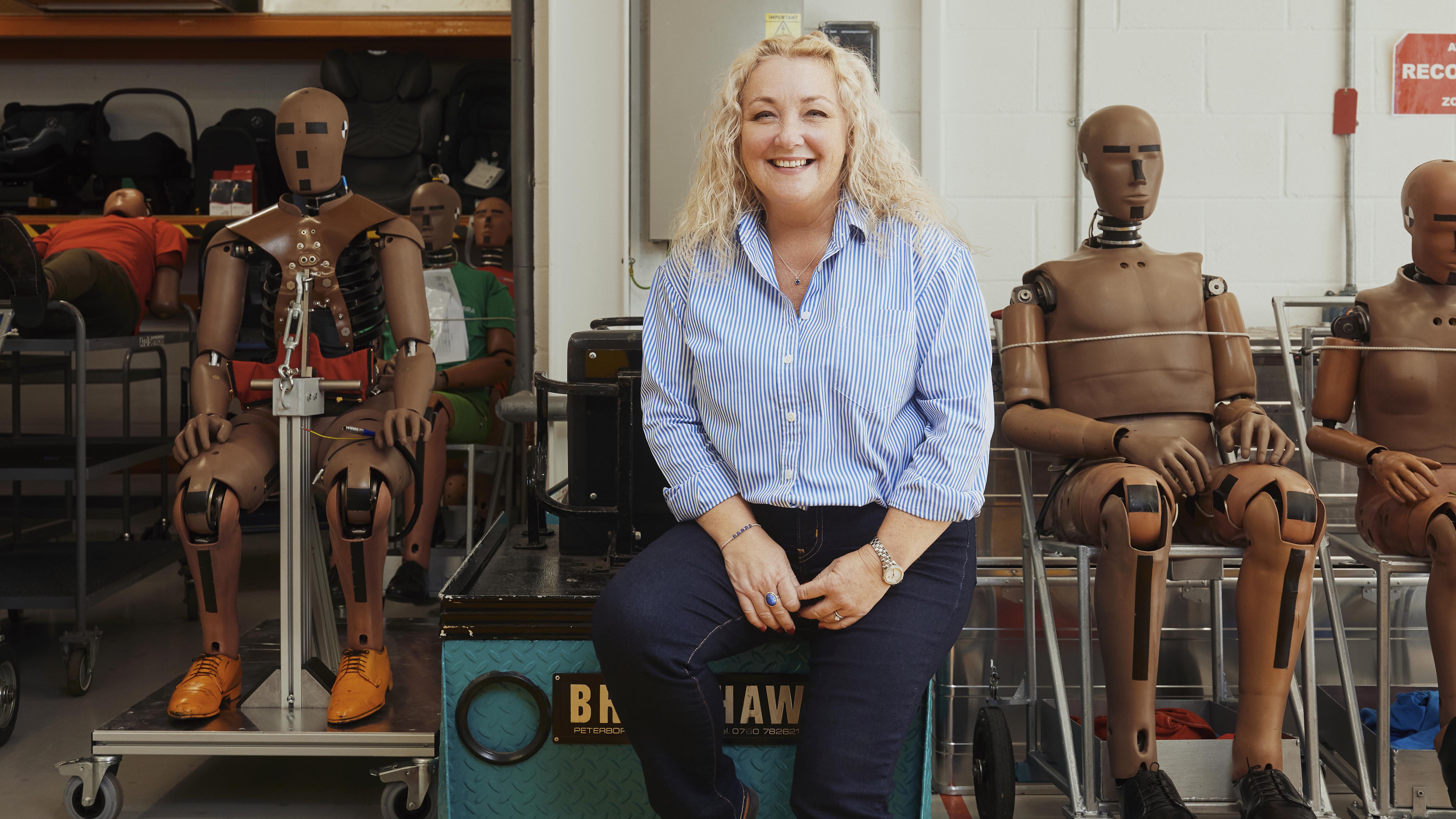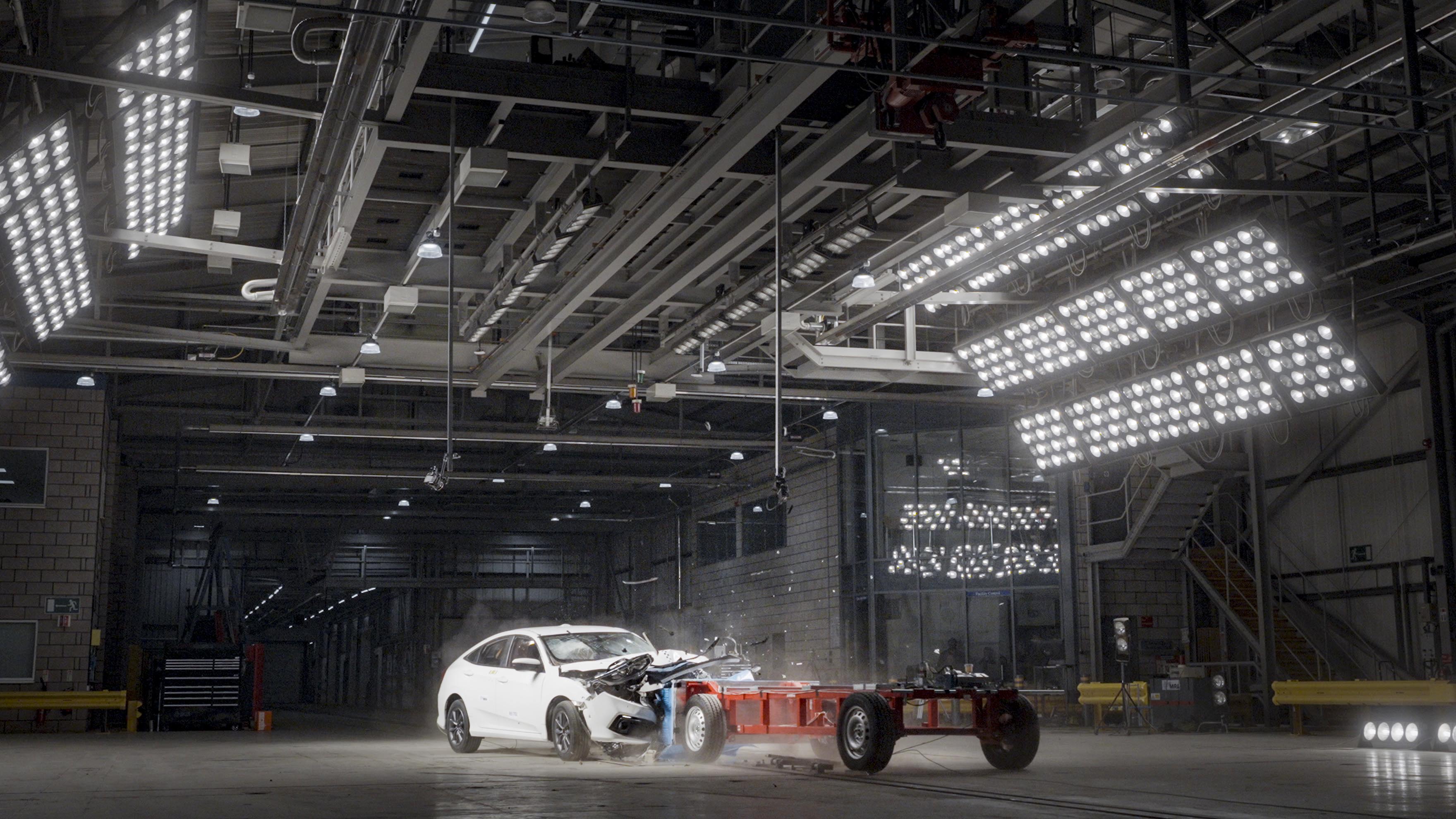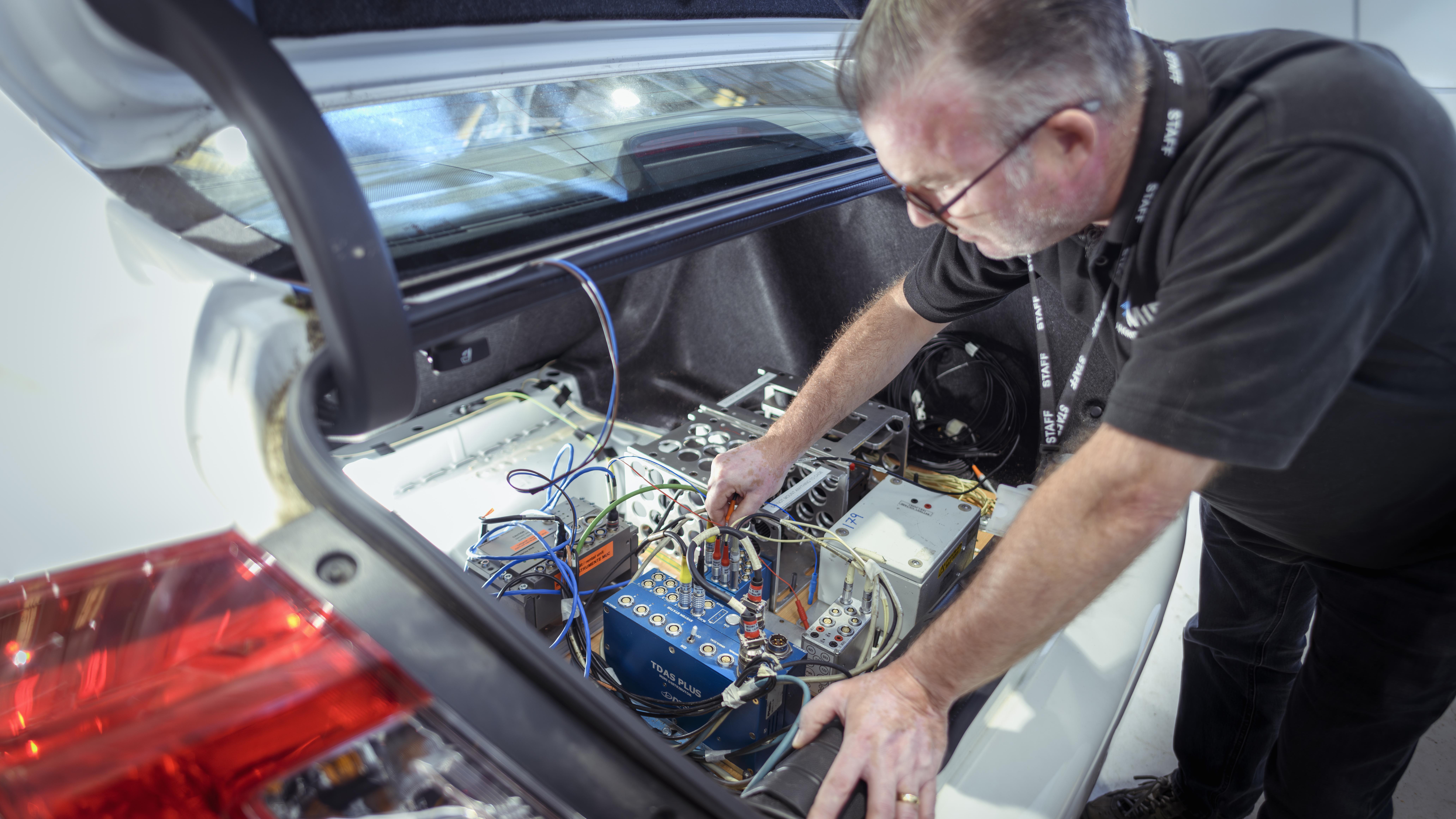
Meet Joanne Smith: the crash test queen
For the past 30 years Joanne has smashed up cars and learned from the wreckage. How much has crash testing changed?
Joanne Smith is responsible for a car crash almost every single day. Sometimes even twice a day. Thankfully, she isn’t some kind of West Midlands-based Pastor Maldonado. Being responsible for pretty much all of the passive safety crash testing that takes place at Horiba MIRA in Nuneaton, Smith smashes up cars for a living.
“It’ll be 30 years that I’ve worked here,” she says. “It has completely changed in that time. When I first started as a test engineer most cars were only just getting airbags and seatbelts were just developing to have pre-tensioners. The roads were a very different place.”
In the early days of her career, it wasn’t always so pleasant to see how the sausage was made. “I used to drive an original Rover Mini. Now there is a car that didn’t crash well. At the time they were putting the driver’s airbag into the steering wheel. I remember watching the crash test quite late one night and afterwards I didn’t want to get in the car to drive home.
Photography: Tom Barnes
“I’ll also always remember doing a test with an estate car where child dummies were sat in the jump seats in the boot. They had seatbelts on, but we did a rear impact and that was horrible. Every now and then you will see a test that makes you feel quite sick.”
But how do you get into a job that lets you legally crash cars? Well, when Smith was 16 she attended a Women in Science and Engineering residential at Manchester Uni. While there she was inspired to enrol in a mechanical engineering degree. “I was always one of those people who wanted to pull things apart,” she says. “I just had a curious mind. I used to pull all of my toys apart. I wanted to see how everything worked.”
Around the turn of the century Smith moved into management at MIRA. “I saw a different side to work, watching people, as well as watching crash safety, develop.
“I’ve never wanted to leave Passive Safety because no day is ever the same. This is the most exciting job in the world. Smashing things up and then watching that work go out into the industry and affect everyday lives.”
It’s not just the team of 60 humans that Smith manages either, because the crash lab is also home to a whole school of dummies. Officially anthropomorphic test devices, the latest and greatest can cost over £1m each and, because they’re set up differently for each test, the lab needs different dummies for front, rear and side impact crashes.
“Nothing is cheap in this industry,” says Smith as she explains the new £380,000 camera system that has just been installed to film at 10,000fps in order to capture just 250 milliseconds of crash. That camera setup will pair with a new electric winch and ‘multimillion pound’ crash lab extension to allow the Horiba MIRA team to conduct the latest Euro NCAP car to car impact tests.
Top Gear
Newsletter
Thank you for subscribing to our newsletter. Look out for your regular round-up of news, reviews and offers in your inbox.
Get all the latest news, reviews and exclusives, direct to your inbox.
Said test is conducted with each car doing 50mph, although for consistency only the car being rated actually looks like something you might see on the road. The control is essentially a bare chassis with a deformable front end that comes in both standard and SUV sizes. The impact takes place with a 50 per cent overlap, because frontal collisions are rarely dead-on. “The 50 or 40 per cent overlap is actually much more severe than a dead-on hit,” explains Smith. “With a 100 per cent overlap the energy is dissipated across a full front end and then down both sides of the car. If you hit 50 per cent, all of the energy goes down one side of the car so it’s quite severe.”
Joanne’s lab now becomes the first facility in the UK able to perform the test, but what’s the end goal here? Can cars ever be considered completely safe? “I think ultimately we just want to reduce road deaths and serious injuries,” says Smith. “To think that over the last 30 years, I’ve seen Euro NCAP introduced and been part of its development, all the way through to this new protocol being introduced that includes the car to car test. It now feels like a new era of crash testing.”
Trending this week
- Car Review
BMW iX3










